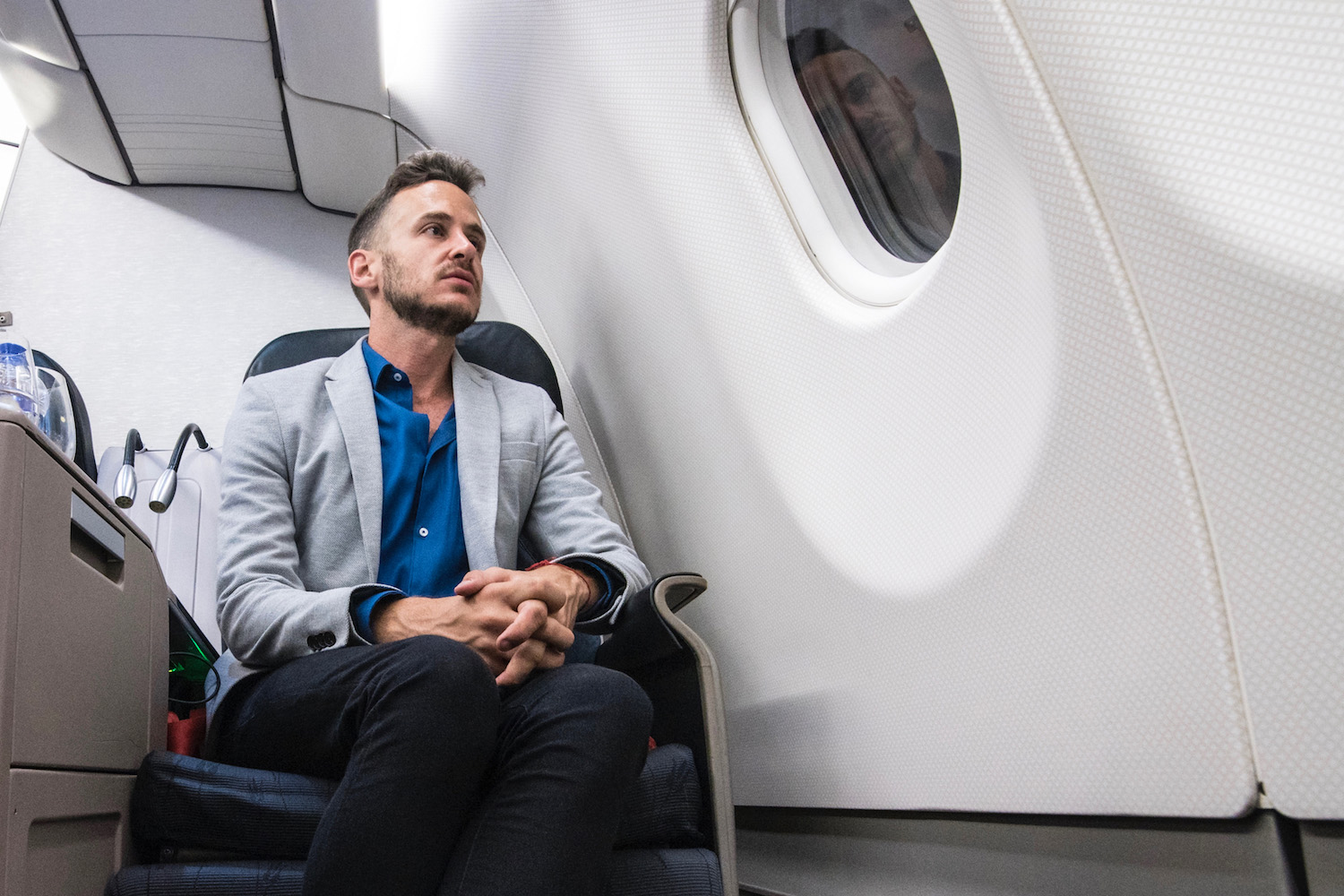I started thinking almost immediately about how I would write my Turkish Airlines business class review, but not because anything about my experience at Suvarnabhumi Airport in Bangkok was exceptional, or even remarkable. Well, except for what a high percentage of my fellow premium passengers were grandpa sex tourists of the most unappealing sort—but I digress.
To be sure, this was actually my third separate experience (and my sixth individual flight segment) flying business on Turkish. And I have to admit, although my many amazing experiences flying in business class led me to believe I’d be disappointed rehashing this one, I came away from most aspects of the experience (apart from how much I wish the new Istanbul Airport were open, anyway) highly, highly impressed.
Turkish Airlines Business Class Seats
I was actually annoyed during my first hour or so in Turkish A330 business class, though that had less to do with the airline with the aforementioned creeps that surrounded me on all sides, one of them was loudly bitching about how bad the seats apparently were. Before my flight I’d anticipated feeling the same way —I generally prefer 1-2-1 seats like the ones you find on Cathay Pacific, or the Apex Suites on JAL and Korean Air).
However, the lie flat seats were spacious and comfortable, in spite of the fact that their 2-2-2 configuration left me completely exposed to the daddies around me. They actually seemed almost identical to the ones I’d flown in on Turkish Airlines 777 business class in 2015 (from Istanbul) and 2016 (to Ethiopia and back), though those are in an even more cramped 2-3-2 arrangement.
Turkish Airlines Food Review
It wouldn’t be a Turkish Airlines business class review without commenting on the food, which is arguably the best in the sky. While I’m well aware that the on-board chefs do little more than supervise the presentation and service of the food (even though many of them have worked in the amazing Do&Co facility in Istanbul, where the meals are designed and prepared), no amount of pomp and circumstance can diminish the amazing flavors Turkish serves up in business class.
Oddly, although the lamb I enjoyed from Bangkok to Istanbul and the beef I enjoyed on the way back were probably the best two cuts of meat I’ve ever enjoyed in the sky, the most remarkable culinary quirk I experienced had nothing to do with the Turkish Airlines flying chef. Rather, an actual slab of honeycomb accompanied my breakfast service en route from Istanbul to Zurich, and though having a Turkish coffee at 35,000 feet is unique, eating honey the water nature intended it was absolutely unprecedented.

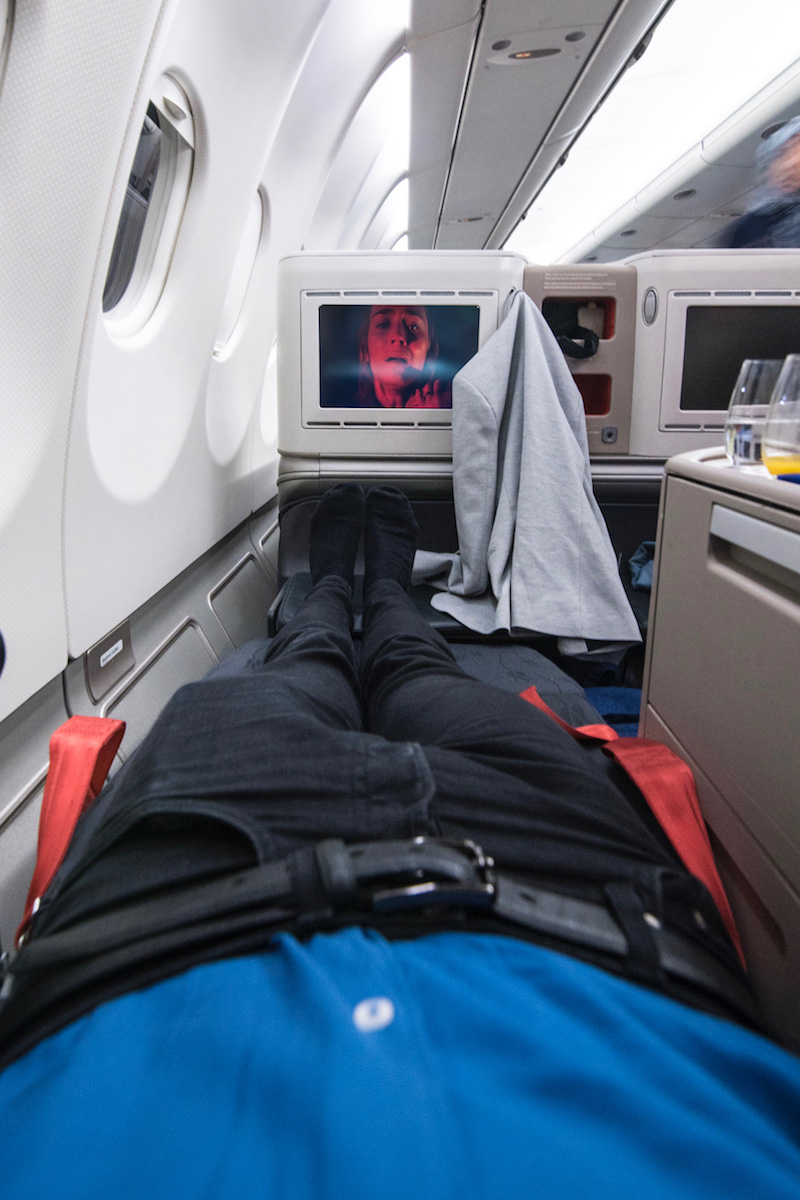
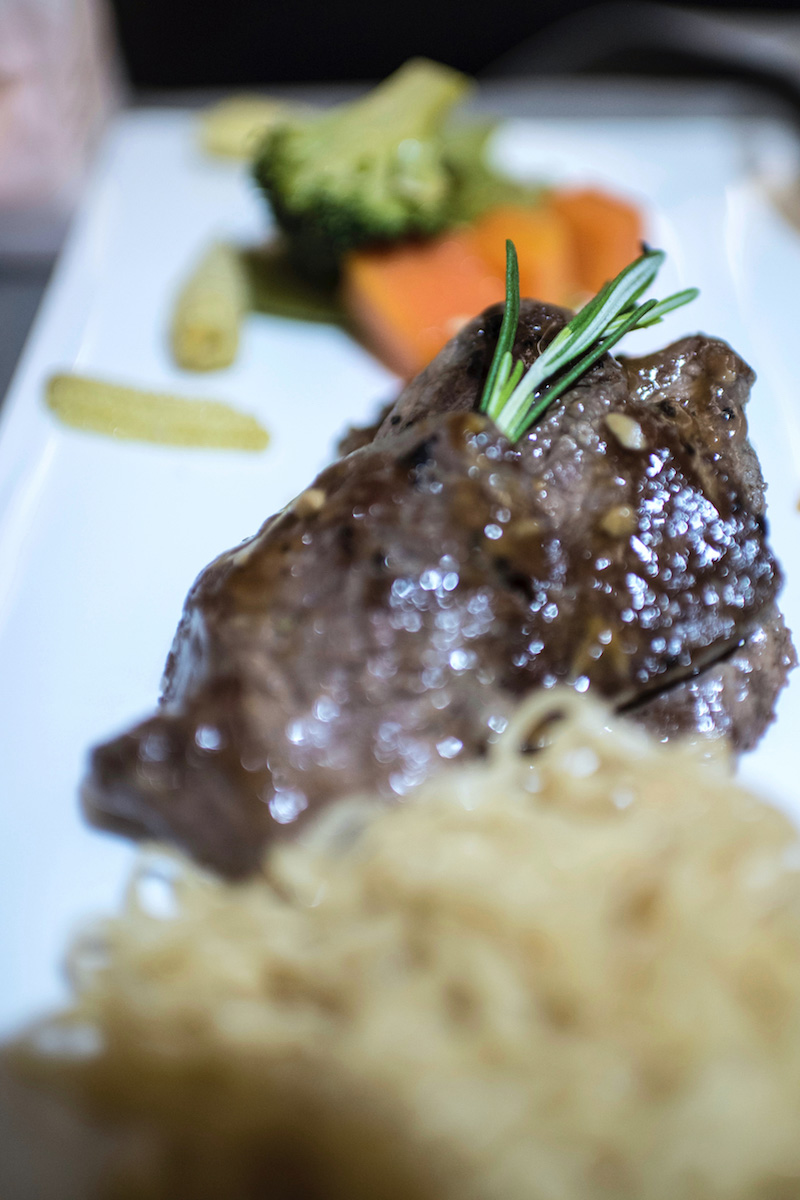
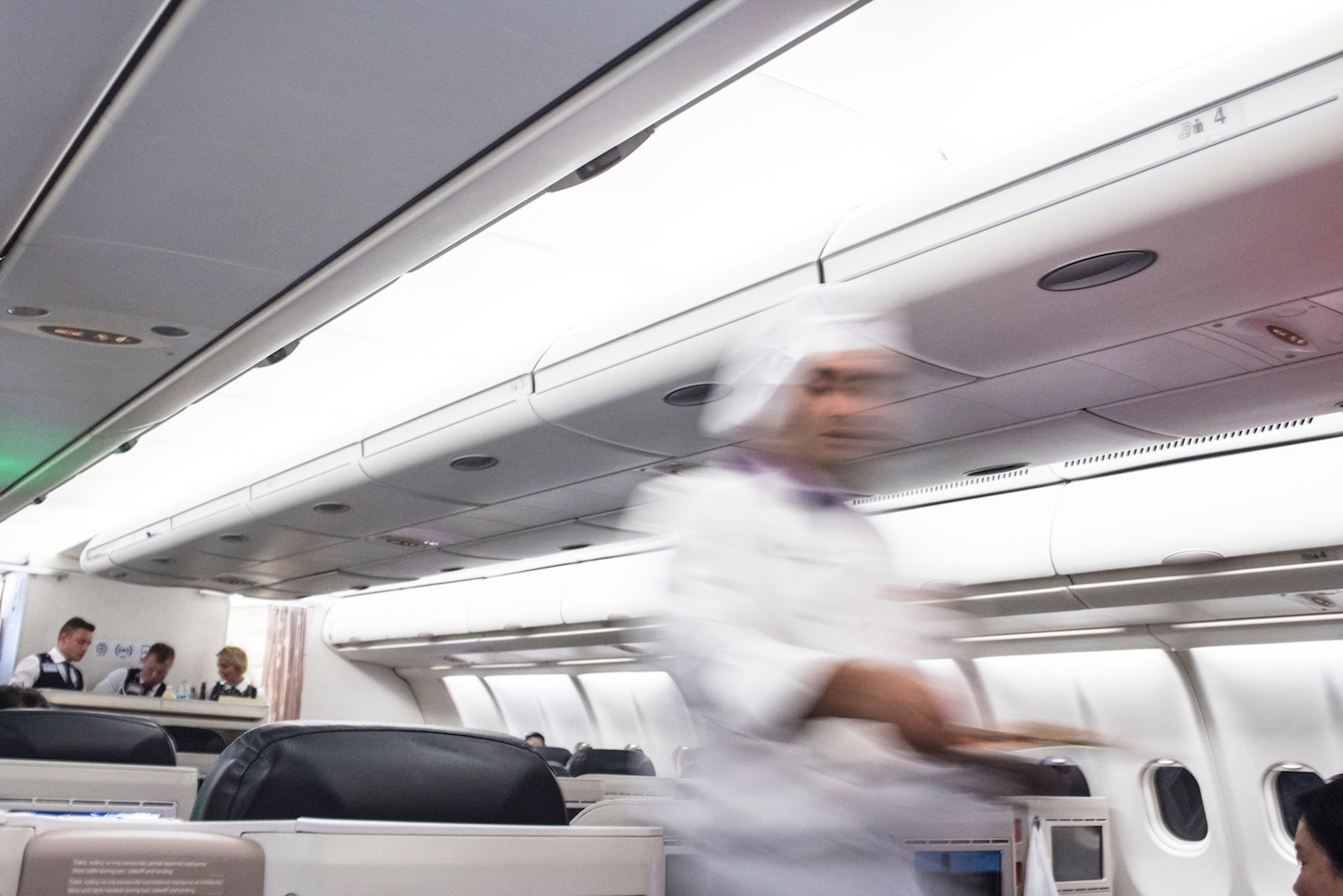

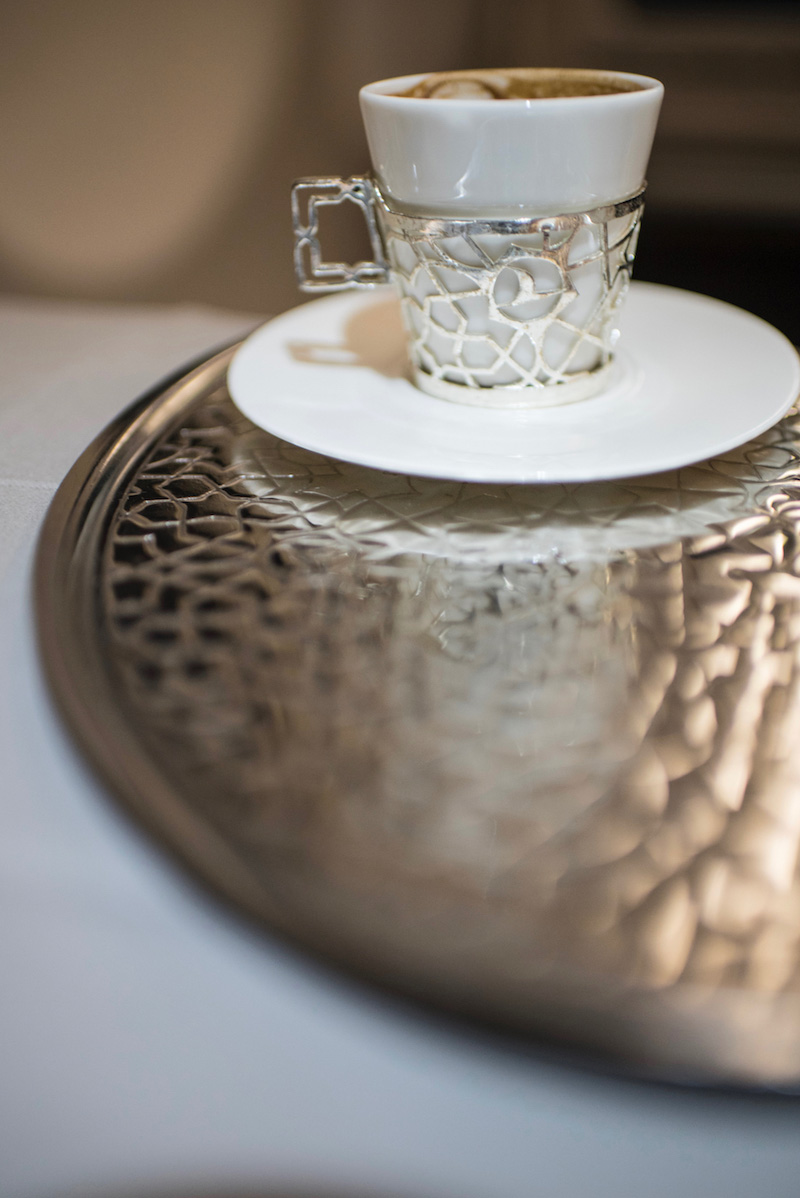
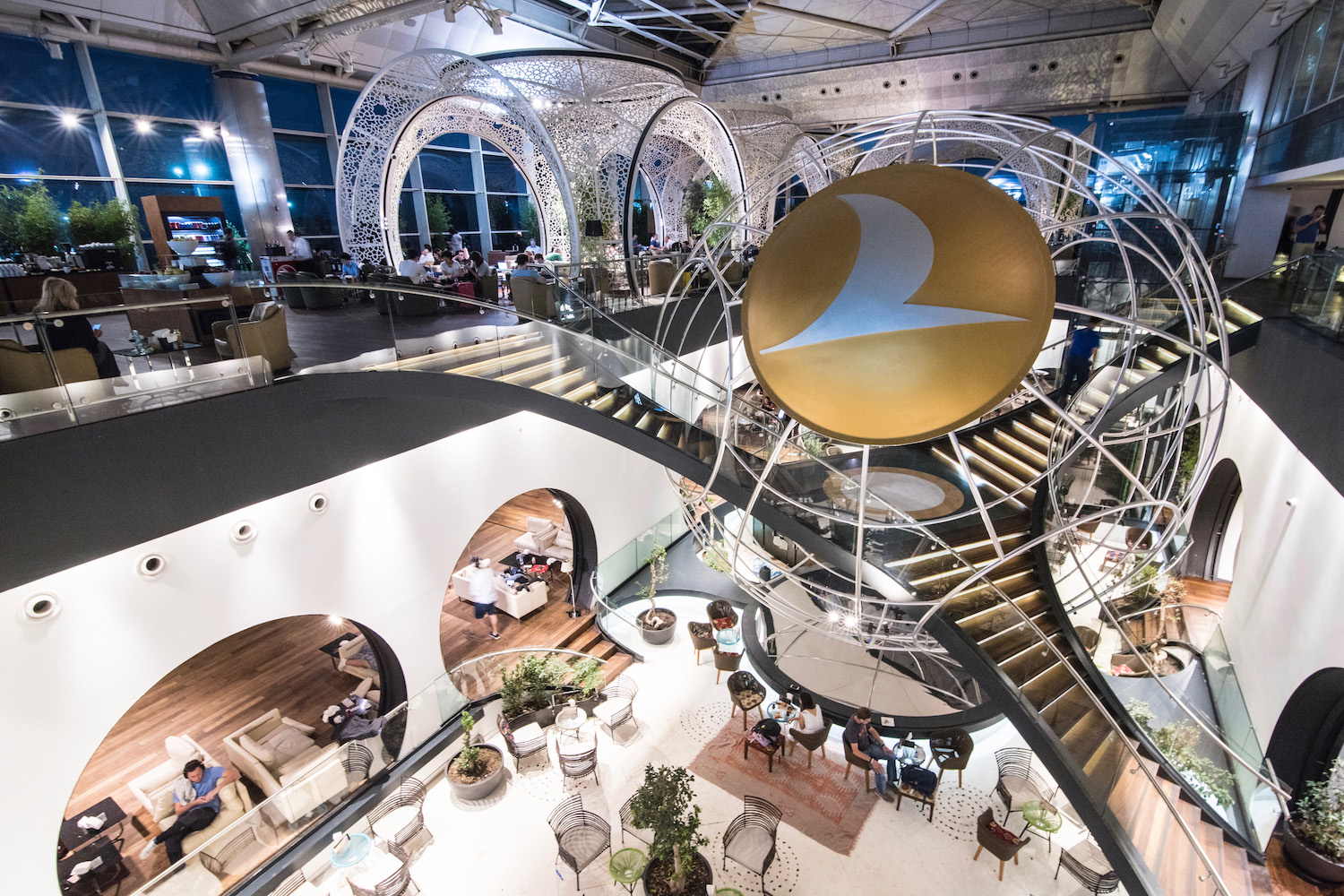
Turkish Airlines Business Class Service
Notwithstanding specific items on the Turkish Airlines business class menu, I’ve always found service on the airline to be outstanding as well. The crews always speak basically perfect English, and are available throughout the flight to promptly and enthusiastically attend to passenger needs. There isn’t a lot of small talk, as I’ve found there is on North American airlines. Rather, the general manner of Turkish cabin crew is in the same vein as Japanese and other North Asian carriers.
I’m going to decline commenting on the Turkish Airlines Lounge Istanbul (or Istanbul Ataturk airport in general) for the purposes of this review. Like the airport facility (which was projected to close a few months after my flight but, as of January 2019, is still open), the lounge was basically falling apart, and while the food was delicious and the staff were courteous, it was far from a pleasant place to spend several hours in the middle of the night.
How I Booked Turkish Airlines
As I plotted my trip to Switzerland and the Baltic States early last spring, I noticed that a Turkish Airlines sale from Bangkok to Europe (via Istanbul) had begun. Although the fares weren’t extremely competitive (I paid around $1,900 round-trip, which is about 30-40% less than the typical price of a business class flight), I was excited to sample Turkish Airlines A330 business class. Turkish’s extensive route network also afforded me the convenience of flying to Zurich and flying home from Tallinn, which was priceless.
Booking Turkish Airlines Business Class with Miles
If you aren’t able to score a deal on Turkish Airlines business class like I did, the best-value way to book these awards is using miles as points. As far as which program to choose? That’s not actually a very simple answer. I’m temped to recommend Avianca LifeMiles, since you can often purchase these points for less than two cents each or United MileagePlus, since the booking process is so straightforward. However, ANA Mileage Club (which, like Avianca, is an Amex Transfer partner) offers great deals on flights of certain lengths, provided you’re OK taking a round-trip.
Another way to fly in Turkish Airlines’ business class is to book an economy class ticket, and purchase a Turkish Airlines business class upgrade with miles. For this, however, you’ll generally need to use miles from Turkish Airlines’ own Miles & Smiles program, which are somewhat difficult to accrue if you’re not an existing member. (Well, unless you want to apply for a Citi ThankYou card, which I highly recommend against.)
The Bottom Line
As I wrote this Turkish Airlines business class review, I felt as surprised—and delighted—as I did during my most recent Turkish Airlines flights. Recently announced improvements in Turkish Airlines product (namely, new Turkish Airlines business class seats) and the imminent opening of Istanbul’s New Airport will undoubtedly make future flights pale in comparison to these ones.
With this being said, the experience Turkish is able to offer in spite of a woefully uncompetitive product and a terrible home airport speaks volumes to its excellent food, service and reputation as one of the world’s leading airlines.

Robert Schrader is a travel writer and photographer who’s been roaming the world independently since 2005, writing for publications such as “CNNGo” and “Shanghaiist” along the way. His blog, Leave Your Daily Hell, provides a mix of travel advice, destination guides and personal essays covering the more esoteric aspects of life as a traveler.

